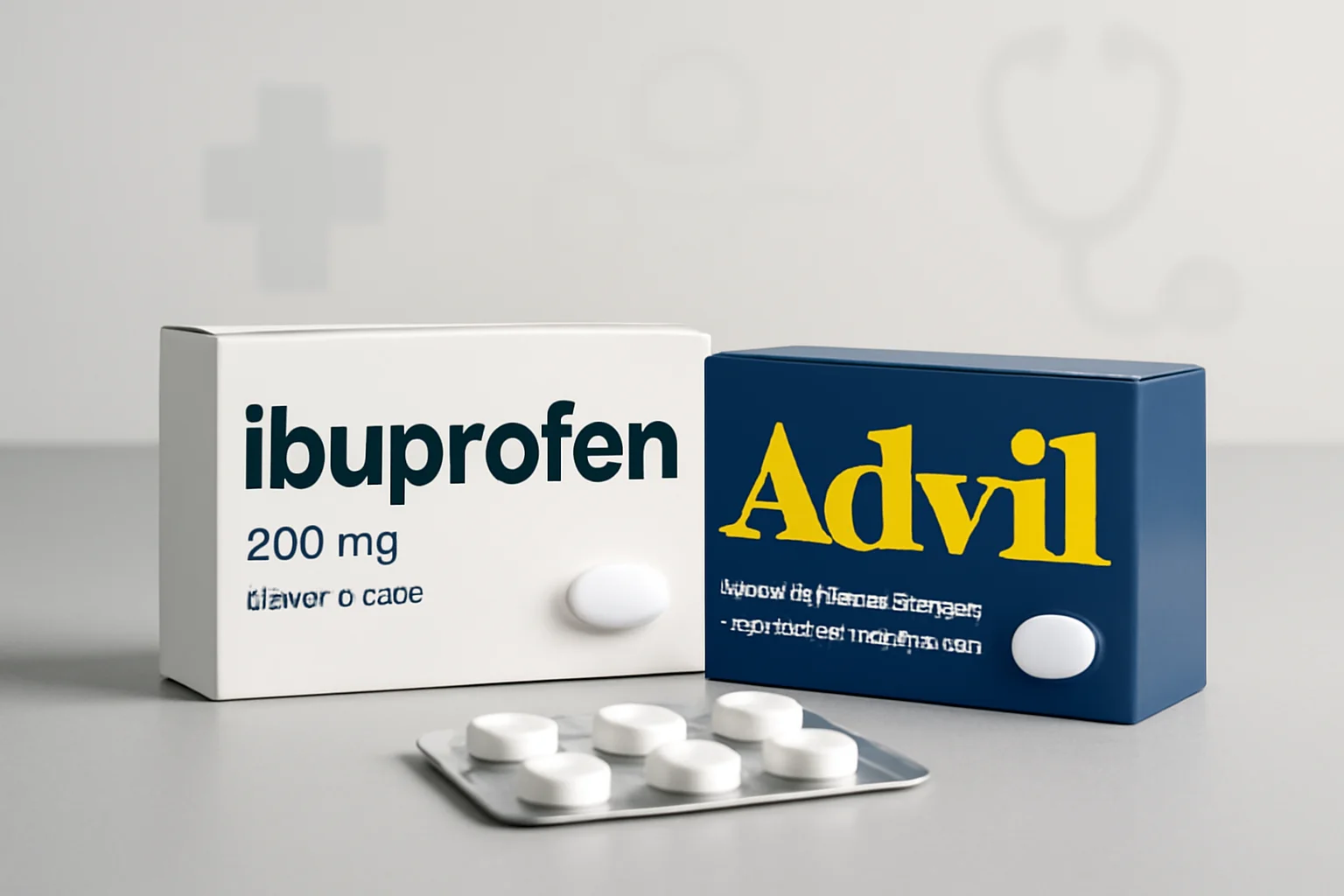
Cataflam or Advil: Which is the More Effective Pain Reliever?
The world of pain relievers is diverse, with different formulations having varying mechanisms of action and areas of application. In medical literature and on pharmacy shelves, there are numerous pain relievers, among which Cataflam and Advil are among the most commonly used. Both formulations are intended to relieve different types of pain, but they have different active ingredients and properties. The active ingredient in Cataflam is diclofenac, a non-steroidal anti-inflammatory drug (NSAID), while Advil contains ibuprofen, also an NSAID, but with a different chemical structure and pharmacological profile.
Although both medications are effective pain relievers, individual needs, the reason for use, and possible side effects should be taken into account when making a choice. People react to medications with varying sensitivities, so it is important to select the most appropriate solution. Additionally, the method of administration and dosage of the medications can also be determining factors. In this article, we will thoroughly examine the differences between Cataflam and Advil to assist those seeking pain relief in making the best decision.
Cataflam: Active Ingredient and Areas of Application
The main active ingredient in Cataflam is diclofenac, which is a non-steroidal anti-inflammatory drug. The mechanism of action of diclofenac is based on the inhibition of prostaglandin synthesis, which plays a role in the development of inflammation and pain. Cataflam has a wide range of applications and effectively reduces pain, inflammation, and fever.
Its most common applications include the treatment of inflammatory conditions such as rheumatoid arthritis and osteoarthritis. Additionally, Cataflam alleviates postoperative pain, menstrual pain, and pain resulting from various injuries. Due to the effects of diclofenac, in addition to reducing inflammation, the perception of pain also decreases, significantly improving the quality of life for patients.
It is important to note that long-term use of Cataflam may lead to side effects, such as gastrointestinal issues, as it can irritate the gastric mucosa. Therefore, it is always advisable to consult a doctor before taking Cataflam, especially if the patient is taking other medications or has certain health problems.
Cataflam is available in various forms, such as tablets, suspensions, and gels, allowing patients to easily choose the most suitable method of administration for themselves. Dosage and duration of use are based on medical advice to achieve the best possible effect in pain relief.
Advil: Active Ingredient and Areas of Application
The active ingredient in Advil is ibuprofen, which is also a non-steroidal anti-inflammatory drug. The mechanism of action of ibuprofen is similar to that of diclofenac, as it inhibits the production of prostaglandins, but its chemical structure and pharmacological effects differ slightly. The main advantage of Advil is its wide applicability for various types of pain, such as headaches, toothaches, muscle and joint pain, and it is also used for fever reduction.
The effectiveness of Advil in pain relief occurs quickly, making it ideal for urgent pain relief. The medication is available in various forms, including tablets, suspensions, and capsules, allowing users to easily choose the most suitable method of administration for themselves.
As with any medication, attention should be paid to possible side effects when taking Advil. The most common side effects include gastric irritation, nausea, and headaches. More serious but rarer side effects may also occur, so it is important to take the medication only based on medical advice, especially if the patient has existing health issues or is using other medications.
The timing and dosage of Advil administration are also important factors that should be discussed with a doctor to avoid overdose or the appearance of unwanted side effects.
Comparison of Cataflam and Advil
When comparing Cataflam and Advil, it is important to consider the active ingredients, mechanisms of action, areas of application, and side effects. As mentioned earlier, Cataflam contains diclofenac, while Advil contains ibuprofen. Both medications are effective anti-inflammatory and pain-relieving agents, but their effectiveness and side effects may vary.
Cataflam generally has a stronger pain-relieving effect, especially for inflammatory pains such as those associated with arthritis. In contrast, Advil may act more quickly for fever and minor pains, making it frequently used for home pain relief, such as for headaches or menstrual pain.
In terms of side effects, gastric irritation is more common with Cataflam, while gastrointestinal problems may also occur with Advil, but typically in milder forms. Additionally, it is important to consider the interactions of these medications with other drugs, as both formulations may affect the efficacy of certain medical treatments.
The choice of medication recommended by a doctor always depends on the individual condition and needs of the patient. Targeted questions and medical examinations help determine which medication is most appropriate for pain management.
Which One Should I Choose? Cataflam or Advil?
When choosing between Cataflam and Advil, it is important to consider the type of pain, the purpose of treatment, and individual health status. For example, if dealing with inflammatory pains such as arthritis or postoperative pain, Cataflam may perform better as it more effectively reduces inflammation.
On the other hand, if only temporary pain relief is needed, such as for headaches or fever reduction, Advil may be the more appropriate choice due to its rapid action. Taking Advil is particularly recommended for athletes and those leading an active lifestyle who need to quickly alleviate their pain.
It is essential to consult with a doctor or pharmacist before selecting a medication, as they can take into account individual health status, potential drug interactions, and side effects. With the help of professionals, we can ensure that the chosen medication provides the best possible results in pain relief.
This article does not constitute medical advice. Always consult a doctor for health issues!

